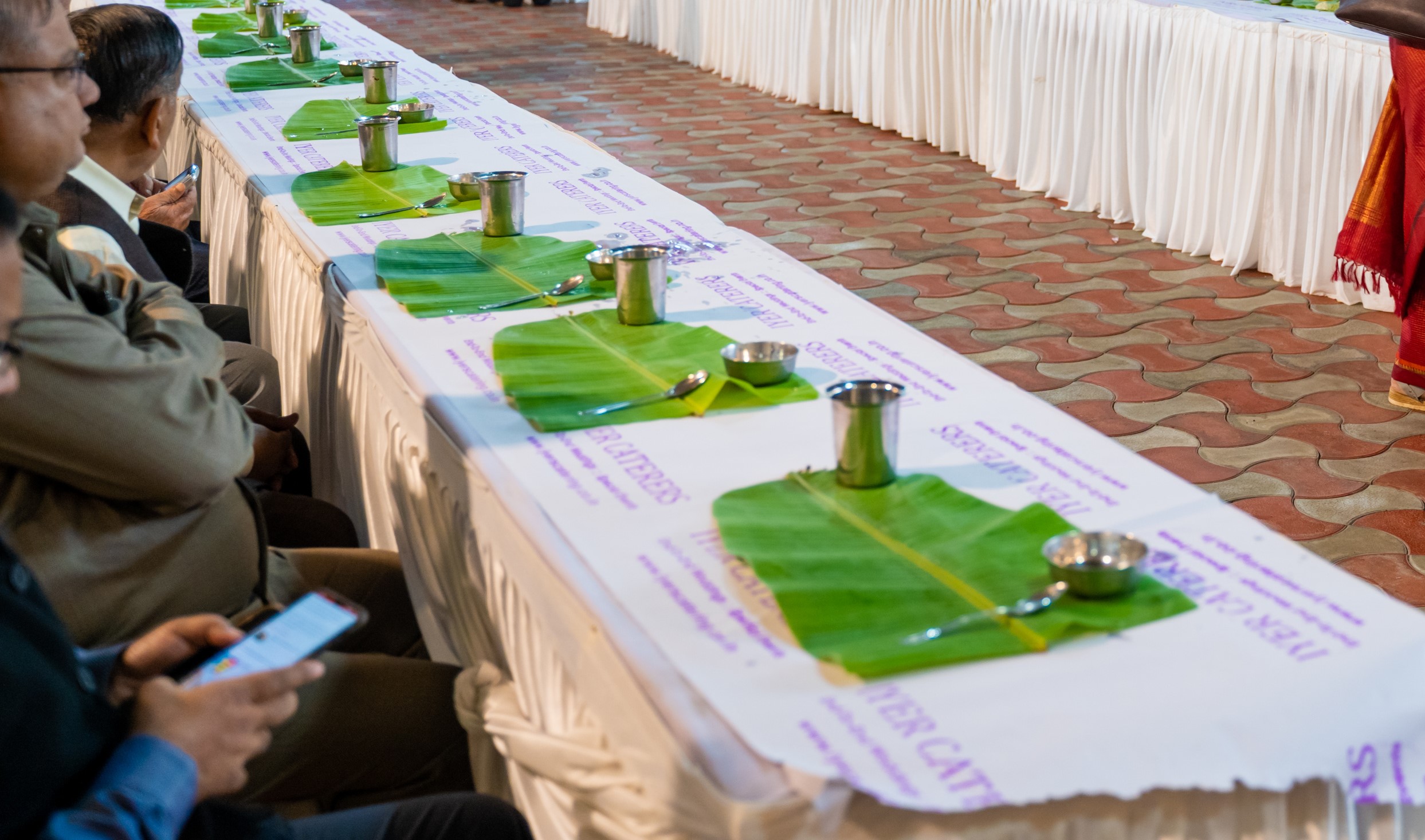
Traditional wedding rituals often reflected a deep understanding of environmental stewardship, with their rich rituals and practices. There are several examples of sustainable practices that were inherently eco-friendly and community-centric in weddings of the past.
Here are a few notable ones:
1.Use of Natural Materials
∙Decorations:
Traditional Indian weddings often used natural materials such as flowers, leaves, and earthen lamps for decoration. Marigold garlands, banana leaves, and rangoli (decorative designs made on the ground using coloured powders) are examples.
∙Utensils and Serveware:
Meals were traditionally served on banana leaves or in plates made from leaves, which are biodegradable and eco-friendly.
How were they sustainable?These materials are biodegradable and did not contribute to plastic waste. They were locally sourced, supporting local economies and reducing transportation-related carbon footprints.
2.Local Sourcing
∙Food:
Ingredients for wedding feasts were usually sourced from local farms and markets. Traditional dishes often utilized seasonal produce.
∙Clothing and Jewelry:
Wedding attire and jewelry were often crafted by local artisans using locally available materials.
How were they sustainable?Reduced transportation emissions due to local sourcing. Support for local economies and traditional craftsmanship.
3.Community Participation
∙Labor and Services:
Weddings involved the participation of the entire community, with neighbors and relatives contributing their time and skills to various aspects of the wedding.
∙Exchange of Gifts:
Instead of expensive, often non-biodegradable gifts, traditional weddings involved the exchange of practical items, often homemade or locally made.
How were they sustainable?Reduced reliance on commercial services and products. Strengthened community bonds and mutual support systems.
4.Reusing and Recycling
∙Wedding Attire:
Often, wedding saris and jewelry were passed down through generations, or borrowed within extended families.
∙Decorations and Setup:
Items used for decoration were often reused from previous events or repurposed for future ones.
How were they sustainable?Minimizing waste and promoting the reuse of valuable items. Preserving cultural heritage through the reuse of traditional items.
5.Minimal Use of Energy-Intensive Resources
∙Ceremonial Fires:
The sacred fire (Agni) used in Hindu weddings is small and contained, in contrast to elaborate lighting and pyrotechnics seen in modern weddings.
∙Venues:
Weddings were often held in community spaces, homes, or temples, reducing the need for energy-intensive wedding halls.
How were they sustainable?Lower energy consumption compared to modern venues. Reduced carbon footprint due to simpler ceremonies.
Many practices in traditional Indian weddings were inherently sustainable due to their reliance on natural materials, local resources, community involvement, and a culture of reuse. These practices not only minimized environmental impact but also strengthened social ties and preserved cultural traditions.
If you’d like to stick to traditions while contributing to the safety of our planet, Atulya Weddings and Events should be the partner of your choice. Specializing in traditional, ritualistic events, we are also proud recipients of awards for our zero-waste generating events.
Interested to learn more?
Mobile no.: +91 7305946717
E-mail: hello@atulyaevents.com








Leave a comments